A Bibliometric Analysis and Scoping Review of the Critical Success Factors for Residential Building Energy Retrofitting
Abstract
1. Introduction
2. Materials and Methods
2.1. Bibliometric Analysis
2.2. Scoping Review
2.2.1. Definition of Research Questions
2.2.2. Literature Search Strategy
2.2.3. Screening and Selection of Past Studies
2.2.4. Data Charting
2.2.5. Collation, Summarisation, and Reporting of Results
3. Results
3.1. Selection of Selected Studies
3.2. Bibliometric Analysis of Selected Studies
3.2.1. Publication Trends
3.2.2. Frequency of Citations
3.2.3. Selected Publications by Country and Region of Focus
3.2.4. Publication Type and Names
3.2.5. Research Methods Adopted
3.2.6. Co-Authorship
3.2.7. Authors’ Keywords Co-Occurrence
3.3. Themes of CSFs
3.3.1. Project-Related Factors
3.3.2. Contract-Related Factors
3.3.3. Stakeholder-Related Factors
3.3.4. Team-Related Factors
3.3.5. Financial-Related Factors
3.3.6. Regulation-Related Factors
3.3.7. Material/Technology-Related Factors
3.4. Conceptual Framework of CSFs for Residential BER Implementation
3.5. Methodologies for CSF Analysis
Application of fsQCA
- Step 1: Define the Outcome and Causal Conditions
- Project-related: energy audits (X1).
- Contract-related: clear contracts (X2).
- Stakeholder-related: stakeholders’ collaboration (X3).
- Team-related: technical expertise (X4).
- Financial-related: financial incentives (X5).
- Regulation-related: supportive government policies (X6).
- Material/technology-related: sustainable materials and technologies (X7).
- Step 2: Entering Data into Software
- Step 3: Data Transformation and Calibration
- Step 4: Construct the Truth Table
- Step 5: Solution Analysis and Interpretation
4. Implications
4.1. Policy
4.2. Research
5. Conclusions
Author Contributions
Funding
Conflicts of Interest
References
- Fei, W.; Opoku, A.; Agyekum, K.; Oppon, J.A.; Ahmed, V.; Chen, C.; Lok, K.L. The Critical Role of the Construction Industry in Achieving the Sustainable Development Goals (SDGs): Delivering Projects for the Common Good. Sustainability 2021, 13, 9112. [Google Scholar] [CrossRef]
- Berndes, G.; Abt, B.; Asikainen, A.; Cowie, A.; Dale, V.; Egnell, G.; Lindner, M.; Marelli, L.; Paré, D.; Pingoud, K.; et al. Forest Biomass, Carbon Neutrality and Climate Change Mitigation; From Science to Policy; European Forest Institute: Joensuu, Finland, 2016. [Google Scholar]
- United Nations. The Race to Zero Emissions, and Why the World Depends on It. Available online: https://news.un.org/en/story/2020/12/1078612 (accessed on 8 September 2024).
- Ogbonna, C.G.; Nwachi, C.C.; Okeoma, I.O.; Fagbami, O.A. Understanding Nigeria’s Transition Pathway to Carbon Neutrality Using the Multilevel Perspective. Carbon Neutrality 2023, 2, 24. [Google Scholar] [CrossRef]
- Vaidyanathan, G. Scientists Cheer India’s Ambitious Carbon-Zero Climate Pledge. Nature 2021. [Google Scholar] [CrossRef]
- Zhang, M.; Zhou, S.; Wang, Q.; Liu, L.; Zhou, D. Will the Carbon Neutrality Target Impact China’s Energy Security? A Dynamic Bayesian Network Model. Energy Econ. 2023, 125, 106850. [Google Scholar] [CrossRef]
- Peiris, S.; Lai, J.H.K.; Kumaraswamy, M.M.; Hou, H. Smart Retrofitting for Existing Buildings: State of the Art and Future Research Directions. J. Build. Eng. 2023, 76, 107354. [Google Scholar] [CrossRef]
- United States Environmental Protection Agency. Smart Growth and Preservation of Existing and Historic Buildings. Available online: https://www.epa.gov/smartgrowth/smart-growth-and-preservation-existing-and-historic-buildings#:~:text=Anew%2Cgreen%2Cenergy-efficientofficebuildingthatincludes,lostindemolishingacomparableexistingbuilding (accessed on 8 September 2024).
- Tan, Y.; Liu, G.; Zhang, Y.; Shuai, C.; Shen, G.Q. Green Retrofit of Aged Residential Buildings in Hong Kong: A Preliminary Study. Build. Environ. 2018, 143, 89–98. [Google Scholar] [CrossRef]
- Madushika, U.G.D.; Ramachandra, T.; Karunasena, G.; Udakara, P.A.D.S. Energy Retrofitting Technologies of Buildings: A Review-Based Assessment. Energies 2023, 16, 4924. [Google Scholar] [CrossRef]
- Mayer, Z.; Volk, R.; Schultmann, F. Analysis of Financial Benefits for Energy Retrofits of Owner-Occupied Single-Family Houses in Germany. Build. Environ. 2022, 211, 108722. [Google Scholar] [CrossRef]
- Pivo, G.; Fisher, J. Investment Returns from Responsible Property Investments: Energy Efficient, Transit-Oriented and Urban Regeneration Office Properties in the US from 1998–2007; Responsible Property Investing Center, Boston College: Boston, MA, USA, 2008. [Google Scholar]
- Payne, J.; Downy, F.; Weatherall, D. Capturing the “Multiple Benefits” of Energy Efficiency in Practice: The UK Example. In Proceedings of the Summer Study on Energy Efficiency (ECEEE 2015), Hyères, France, 1–6 June 2015; pp. 229–238. [Google Scholar]
- Peel, J.; Ahmed, V.; Saboor, S. An Investigation of Barriers and Enablers to Energy Efficiency Retrofitting of Social Housing in London. Constr. Econ. Build. 2020, 20, 127–149. [Google Scholar] [CrossRef]
- Gaspari, J.; Antonini, E.; Marchi, L. Enabling Technologies to Support Energy Transition in Social Housing. TECHNE J. Technol. Archit. Environ. 2023, 25, 143–152. [Google Scholar] [CrossRef]
- Lakhiar, M.T.; Sanmargaraja, S.; Olanrewaju, A.; Lim, C.H.; Ponniah, V.; Mathalamuthu, A.D. Energy Retrofitting Strategies for Existing Buildings in Malaysia: A Systematic Review and Bibliometric Analysis. Environ. Sci. Pollut. Res. 2024, 31, 12780–12814. [Google Scholar] [CrossRef] [PubMed]
- Liang, X.; Shen, G.; Guo, L. Improving Management of Green Retrofits from a Stakeholder Perspective: A Case Study in China. Int. J. Environ. Res Public Health 2015, 12, 13823–13842. [Google Scholar] [CrossRef]
- Sang, P.; Yao, H. Exploring Critical Success Factors for Green Housing Projects: An Empirical Survey of Urban Areas in China. Adv. Civ. Eng. 2019, 7, 1–13. [Google Scholar] [CrossRef]
- Wang, P.; Ji, C.; Yu, P.; Huang, L. A Procedure Set to Construct the Optimal Energy Saving Retrofit Strategy for Old Residential Buildings in China. J. Renew. Sustain. Energy 2023, 15, 025101. [Google Scholar] [CrossRef]
- Shen, L.; Tang, L.; Mu, Y. Critical Success Factors and Collaborative Governance Mechanism for the Transformation of Existing Residential Buildings in Urban Renewal: From a Social Network Perspective. Heliyon 2024, 10, e27672. [Google Scholar] [CrossRef] [PubMed]
- Armijo, A.; Elguezabal, P.; Lasarte, N.; Weise, M. A Methodology for the Digitalization of the Residential Building Renovation Process through OpenBIM-Based Workflows. Appl. Sci. 2021, 11, 10429. [Google Scholar] [CrossRef]
- Galvin, R. Do Housing Rental and Sales Markets Incentivise Energy-Efficient Retrofitting of Western Germany’s Post-War Apartments? Challenges for Property Owners, Tenants, and Policymakers. Energy Effic. 2023, 16, 25. [Google Scholar] [CrossRef] [PubMed]
- Groh, A.; Kuhlwein, H.; Bienert, S. Does Retrofitting Pay Off? An Analysis of German Multifamily Building Data. J. Sustain. Real Estate 2022, 14, 95–112. [Google Scholar] [CrossRef]
- Huang, M.-Q.; Lin, R.-J. Evolutionary Game Analysis of Energy-Saving Renovations of Existing Rural Residential Buildings from the Perspective of Stakeholders. Sustainability 2022, 14, 5723. [Google Scholar] [CrossRef]
- Huang, C.; Ma, J.; Song, K. Homeowners’ Willingness to Make Investment in Energy Efficiency Retrofit of Residential Buildings in China and Its Influencing Factors. Energies 2021, 14, 1260. [Google Scholar] [CrossRef]
- Liu, W.; Zhang, J.; Bluemling, B.; Mol, A.P.J.; Wang, C. Public Participation in Energy Saving Retrofitting of Residential Buildings in China. Appl. Energy 2015, 147, 287–296. [Google Scholar] [CrossRef]
- He, Q.; Zhao, H.; Shen, L.; Dong, L.; Cheng, Y.; Xu, K. Factors Influencing Residents’ Intention toward Green Retrofitting of Existing Residential Buildings. Sustainability 2019, 11, 4246. [Google Scholar] [CrossRef]
- Yang, Y.; Sun, R.; Dai, J.; Zhu, M. Evolutionary Analysis of Stakeholder Behavior in Green Retrofitting of Traditional Residential Buildings Based on Dissemination and Game Models. PLoS ONE 2023, 18, e0282314. [Google Scholar] [CrossRef] [PubMed]
- Krarti, M.; Dubey, K.; Howarth, N. Evaluation of Building Energy Efficiency Investment Options for the Kingdom of Saudi Arabia. Energy 2017, 134, 595–610. [Google Scholar] [CrossRef]
- Mukhtar, M.; Ameyaw, B.; Yimen, N.; Zhang, Q.; Bamisile, O.; Adun, H.; Dagbasi, M. Building Retrofit and Energy Conservation/Efficiency Review: A Techno-Environ-Economic Assessment of Heat Pump System Retrofit in Housing Stock. Sustainability 2021, 13, 983. [Google Scholar] [CrossRef]
- Monna, S.; Juaidi, A.; Abdallah, R.; Albatayneh, A.; Dutournie, P.; Jeguirim, M. Towards Sustainable Energy Retrofitting, a Simulation for Potential Energy Use Reduction in Residential Buildings in Palestine. Energies 2021, 14, 3876. [Google Scholar] [CrossRef]
- Pardo-Bosch, F.; Cervera, C.; Ysa, T. Key Aspects of Building Retrofitting: Strategizing Sustainable Cities. J. Environ. Manag. 2019, 248, 109247. [Google Scholar] [CrossRef] [PubMed]
- Martin, R.; Arthur, T.; Jonathan, V.; Mathieu, T.; Enora, G.; Robin, G. SHAPE: A Temporal Optimization Model for Residential Buildings Retrofit to Discuss Policy Objectives. Appl. Energy 2024, 361, 122936. [Google Scholar] [CrossRef]
- Mejjaouli, S. Toward ZEB: A Mathematical Programing-, Simulation-, and AHP-Based Comprehensive Framework for Building Retrofitting. Appl. Sci. 2022, 12, 2241. [Google Scholar] [CrossRef]
- Ohene, E.; Hsu, S.-C.; Chan, A.P.C. Feasibility and Retrofit Guidelines towards Net-Zero Energy Buildings in Tropical Climates: A Case of Ghana. Energy Build. 2022, 269, 112252. [Google Scholar] [CrossRef]
- Wu, Z.; Ding, Y.; Zhang, N.; Gong, X.; Luo, X.; Jin, Y. Feasibility Analysis of Retrofitting Existing Residential towards the EnerPHit Standard in HSCW Zone: A Case Study in Guilin, China. Energy Build. 2023, 298, 113554. [Google Scholar] [CrossRef]
- Jia, L. Mitigating the Risks in Energy Retrofits of Residential Buildings in China. Archit. Built Environ. 2021, 11, 1–252. [Google Scholar] [CrossRef]
- Wenninger, S.; Karnebogen, P.; Lehmann, S.; Menzinger, T.; Reckstadt, M. Evidence for Residential Building Retrofitting Practices Using Explainable AI and Socio-Demographic Data. Energy Rep. 2022, 8, 13514–13528. [Google Scholar] [CrossRef]
- Wierzba, A.L.; Morgenstern, M.A.; Meyer, S.A.; Ruggles, T.H.; Himmelreich, J. A Study to Optimize the Potential Impact of Residential Building Energy Audits. Energy Effic. 2011, 4, 587–597. [Google Scholar] [CrossRef]
- Jagarajan, R.; Abdullah Mohd Asmoni, M.N.; Mohammed, A.H.; Jaafar, M.N.; Lee Yim Mei, J.; Baba, M. Green Retrofitting—A Review of Current Status, Implementations and Challenges. Renew. Sustain. Energy Rev. 2017, 67, 1360–1368. [Google Scholar] [CrossRef]
- Madushika, U.G.D.; Lu, W. Green Retrofitting Application in Developing Economies: State of the Art and Future Research Directions. Energy Build. 2023, 301, 113712. [Google Scholar] [CrossRef]
- Su, Y.; Jin, Q.; Zhang, S.; He, S. A Review on the Energy in Buildings: Current Research Focus and Future Development Direction. Heliyon 2024, 10, e32869. [Google Scholar] [CrossRef]
- Kong, W.; Luo, H.; Yu, Z.; Li, Y.; Wang, C.; Meng, X. Economic Evaluation of Retrofitting Existing Buildings from a Sustainability Perspective: Global Trends and Bibliometric Analysis. Environ. Dev. Sustain. 2024. [Google Scholar] [CrossRef]
- Bastian, Z.; Schnieders, J.; Conner, W.; Kaufmann, B.; Lepp, L.; Norwood, Z.; Simmonds, A.; Theoboldt, I. Retrofit with Passive House Components. Energy Effic. 2022, 15, 10. [Google Scholar] [CrossRef]
- Yang, X.; Chen, Z.; Zou, Y.; Wan, F. Improving the Energy Performance and Economic Benefits of Aged Residential Buildings by Retrofitting in Hot–Humid Regions of China. Energies 2023, 16, 4981. [Google Scholar] [CrossRef]
- Felius, L.C.; Dessen, F.; Hrynyszyn, B.D. Retrofitting towards Energy-Efficient Homes in European Cold Climates: A Review. Energy Effic. 2020, 13, 101–125. [Google Scholar] [CrossRef]
- Poyyamozhi, M.; Murugesan, B.; Rajamanickam, N.; Shorfuzzaman, M.; Aboelmagd, Y. IoT—A Promising Solution to Energy Management in Smart Buildings: A Systematic Review, Applications, Barriers, and Future Scope. Buildings 2024, 14, 3446. [Google Scholar] [CrossRef]
- Ejidike, C.; Mewomo, M.; Olawumi, T.O. Global Trend in Retrofitting Using Smart Technology: A Scientometric Review. In Towards a Sustainable Construction Industry: The Role of Innovation and Digitalisation; Springer International Publishing: Cham, Switzerland, 2023; pp. 153–165. [Google Scholar]
- Valdiserri, P.; Biserni, C.; Tosi, G.; Garai, M. Retrofit Strategies Applied to a Tertiary Building Assisted by Trnsys Energy Simulation Tool. Energy Procedia 2015, 78, 765–770. [Google Scholar] [CrossRef]
- Shu, L.; Zhao, D. Decision-Making Approach to Urban Energy Retrofit—A Comprehensive Review. Buildings 2023, 13, 1425. [Google Scholar] [CrossRef]
- Alamin, E.; Kamaruzaman, N.; Kamar, H.M. A Pragmatic Retrofitting Approach to Enhancing the Thermal, Energy and Economic Performance of an Educational Building: A Case Study in Malaysia. Clean Energy 2023, 7, 1282–1299. [Google Scholar] [CrossRef]
- Dunn, E.C.; Masyn, K.E.; Johnston, W.R.; Subramanian, S. Modeling Contextual Effects Using Individual-Level Data and without Aggregation: An Illustration of Multilevel Factor Analysis (MLFA) with Collective Efficacy. Popul. Health Metr. 2015, 13, 12. [Google Scholar] [CrossRef]
- Johnston, R.; Jones, K.; Manley, D. Confounding and Collinearity in Regression Analysis: A Cautionary Tale and an Alternative Procedure, Illustrated by Studies of British Voting Behaviour. Qual. Quant. 2018, 52, 1957–1976. [Google Scholar] [CrossRef] [PubMed]
- Fischer, M. Social Network Analysis and Qualitative Comparative Analysis: Their Mutual Benefit for the Explanation of Policy Network Structures. Methodol. Innov. Online 2011, 6, 27–51. [Google Scholar] [CrossRef]
- Kraus, S.; Ribeiro-Soriano, D.; Schüssler, M. Fuzzy-Set Qualitative Comparative Analysis (FsQCA) in Entrepreneurship and Innovation Research–The Rise of a Method. Int. Entrep. Manag. J. 2018, 14, 15–33. [Google Scholar] [CrossRef]
- Machinek, M. Fuzzy Set Qualitative Comparative Analysis (FsQCA). In Linking of Emissions Trading Schemes; Springer Fachmedien Wiesbaden: Wiesbaden, Germany, 2022; pp. 61–93. [Google Scholar] [CrossRef]
- Pappas, I.O.; Woodside, A.G. Fuzzy-Set Qualitative Comparative Analysis (FsQCA): Guidelines for Research Practice in Information Systems and Marketing. Int. J. Inf. Manag. 2021, 58, 102310. [Google Scholar] [CrossRef]
- Gough, D.; Oliver, S.; Thomas, J. An Introduction to Systematic Reviews, 2nd ed.; Sage Publications: Thousand Oaks, CA, USA, 2017. [Google Scholar]
- Peters, M.D.J.; Godfrey, C.M.; Khalil, H.; McInerney, P.; Parker, D.; Soares, C.B. Guidance for Conducting Systematic Scoping Reviews. Int. J. Evid.-Based Healthc. 2015, 13, 141–146. [Google Scholar] [CrossRef]
- Whittemore, R.; Knafl, K. The Integrative Review: Updated Methodology. J. Adv. Nurs. 2005, 52, 546–553. [Google Scholar] [CrossRef] [PubMed]
- Arksey, H.; O’Malley, L. Scoping Studies: Towards a Methodological Framework. Int. J. Soc. Res. Methodol. 2005, 8, 19–32. [Google Scholar] [CrossRef]
- Khan, A.; Sepasgozar, S.; Liu, T.; Yu, R. Integration of BIM and Immersive Technologies for AEC: A Scientometric-SWOT Analysis and Critical Content Review. Buildings 2021, 11, 126. [Google Scholar] [CrossRef]
- Kirby, A. Exploratory Bibliometrics: Using VOSviewer as a Preliminary Research Tool. Publications 2023, 11, 10. [Google Scholar] [CrossRef]
- Daudt, H.M.; van Mossel, C.; Scott, S.J. Enhancing the Scoping Study Methodology: A Large, Inter-Professional Team’s Experience with Arksey and O’Malley’s Framework. BMC Med. Res. Methodol. 2013, 13, 48. [Google Scholar] [CrossRef] [PubMed]
- Lockwood, C.; Munn, Z.; Porritt, K. Qualitative Research Synthesis. Int. J. Evid.-Based Healthc. 2015, 13, 179–187. [Google Scholar] [CrossRef] [PubMed]
- He, Q.; Hossain, M.U.; Ng, S.T.; Skitmore, M.; Augenbroe, G. A Cost-Effective Building Retrofit Decision-Making Model—Example of China’s Temperate and Mixed Climate Zones. J. Clean Prod. 2021, 280, 124370. [Google Scholar] [CrossRef]
- Howden-Chapman, P.; Crane, J.; Matheson, A.; Viggers, H.; Cunningham, M.; Blakely, T.; O’Dea, D.; Cunningham, C.; Woodward, A.; Saville-Smith, K.; et al. Retrofitting Houses with Insulation to Reduce Health Inequalities: Aims and Methods of a Clustered, Randomised Community-Based Trial. Soc. Sci. Med. 2005, 61, 2600–2610. [Google Scholar] [CrossRef]
- Hwang, B.-G.; Zhu, L.; Ming, J.T.T. Factors Affecting Productivity in Green Building Construction Projects: The Case of Singapore. J. Manag. Eng. 2017, 33, 04016052. [Google Scholar] [CrossRef]
- Soulios, V.; de Place Hansen, E.J.; Peuhkuri, R. Hygrothermal Simulation Assessment of Internal Insulation Systems for Retrofitting a Historic Danish Building. MATEC Web Conf. 2019, 282, 02049. [Google Scholar] [CrossRef]
- Xie, Y.; Liu, Y. Tripartite Evolutionary Game Analysis of Stakeholder Decision-Making Behavior in Energy-Efficient Retrofitting of Office Buildings. Sustainability 2022, 14, 11697. [Google Scholar] [CrossRef]
- Almomani, A.; Almeida, R.M.S.F.; Vicente, R.; Barreira, E. Critical Review on the Energy Retrofitting Trends in Residential Buildings of Arab Mashreq and Maghreb Countries. Buildings 2024, 14, 338. [Google Scholar] [CrossRef]
- Chung-Camargo, K.; González, J.; Chen Austin, M.; Carpino, C.; Mora, D.; Arcuri, N. Advances in Retrofitting Strategies for Energy Efficiency in Tropical Climates: A Systematic Review and Analysis. Buildings 2024, 14, 1633. [Google Scholar] [CrossRef]
- IEA. Energy Performance of Buildings Directive-EPBD (2002/91/EC); IEA: Paris, France, 2002. [Google Scholar]
- Ayat, M.; Malikah; Kang, C.W. Effects of the COVID-19 Pandemic on the Construction Sector: A Systemized Review. Eng. Constr. Archit. Manag. 2023, 30, 734–754. [Google Scholar] [CrossRef]
- Raynaud, M.; Goutaudier, V.; Louis, K.; Al-Awadhi, S.; Dubourg, Q.; Truchot, A.; Brousse, R.; Saleh, N.; Giarraputo, A.; Debiais, C.; et al. Impact of the COVID-19 Pandemic on Publication Dynamics and Non-COVID-19 Research Production. BMC Med. Res. Methodol. 2021, 21, 255. [Google Scholar] [CrossRef]
- International Energy Agency (IEA). Global Energy Review 2021. Available online: https://www.iea.org/reports/global-energy-review-2021 (accessed on 9 September 2024).
- Cravioto, J.; Mosqueda, A. Local Culture and Urban Retrofit: Reflections on Policy and Preferences for Wall and Roof Materials. Front. Sustain. Cities 2021, 3, 638966. [Google Scholar] [CrossRef]
- Liao, H.; Tang, M.; Luo, L.; Li, C.; Chiclana, F.; Zeng, X.-J. A Bibliometric Analysis and Visualization of Medical Big Data Research. Sustainability 2018, 10, 166. [Google Scholar] [CrossRef]
- Mathai, A.M.; Provost, S.B.; Haubold, H.J. Multivariate Statistical Analysis in the Real and Complex Domains; Springer International Publishing: Cham, Switzerland, 2022; ISBN 978-3-030-95863-3. [Google Scholar]
- Beran, T.N.; Violato, C. Structural Equation Modeling in Medical Research: A Primer. BMC Res. Notes 2010, 3, 267. [Google Scholar] [CrossRef] [PubMed]
- Vis, B. The Comparative Advantages of FsQCA and Regression Analysis for Moderately Large-N Analyses. Sociol. Methods Res. 2012, 41, 168–198. [Google Scholar] [CrossRef]
- Vatrapu, R.; Mukkamala, R.R.; Hussain, A.; Flesch, B. Social Set Analysis: A Set Theoretical Approach to Big Data Analytics. IEEE Access 2016, 4, 2542–2571. [Google Scholar] [CrossRef]
- Ragin, C.C. Redesigning Social Inquiry: Fuzzy Sets and Beyond; University of Chicago Press: Chicago, IL, USA, 2008. [Google Scholar]

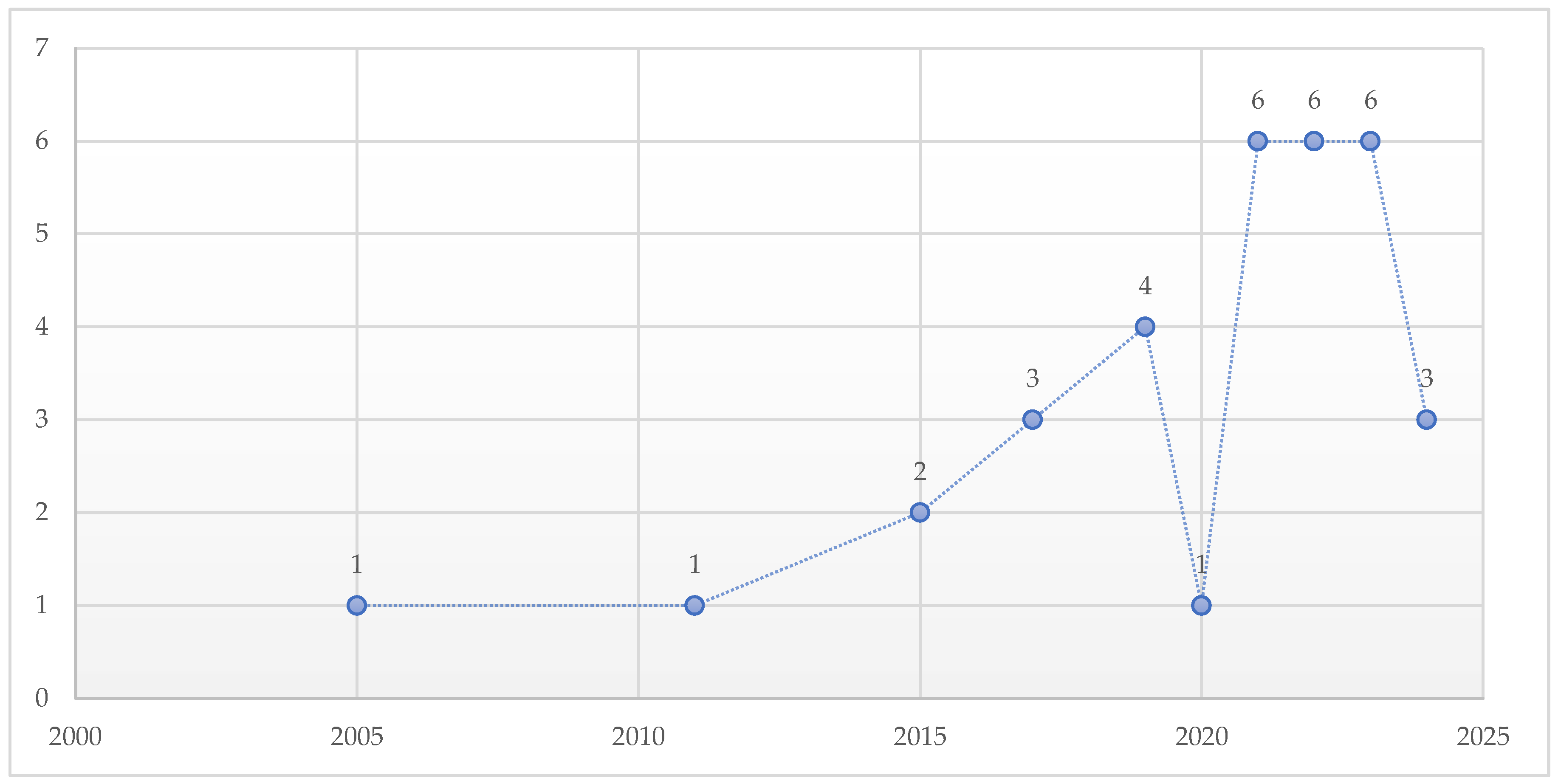
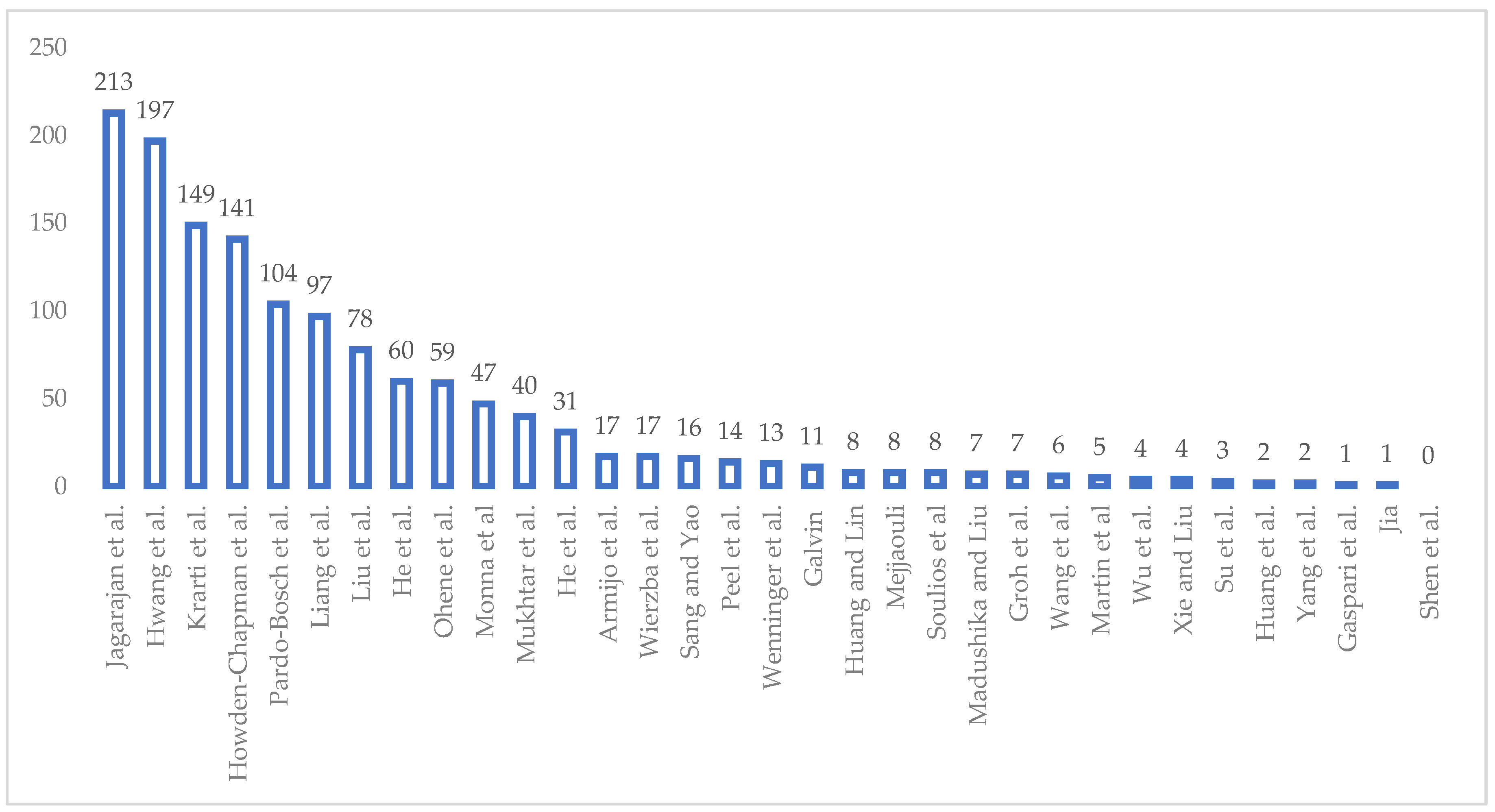
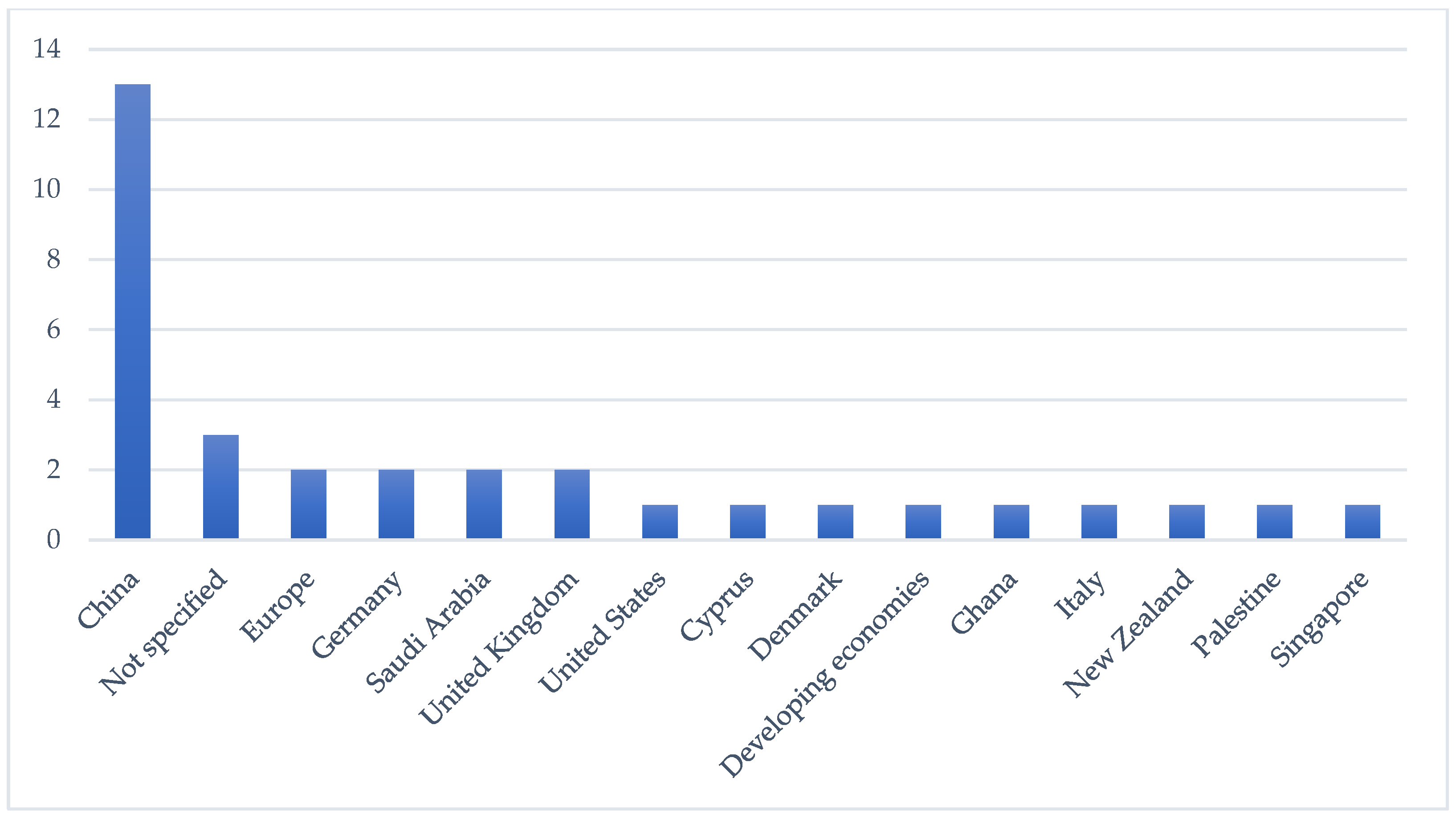
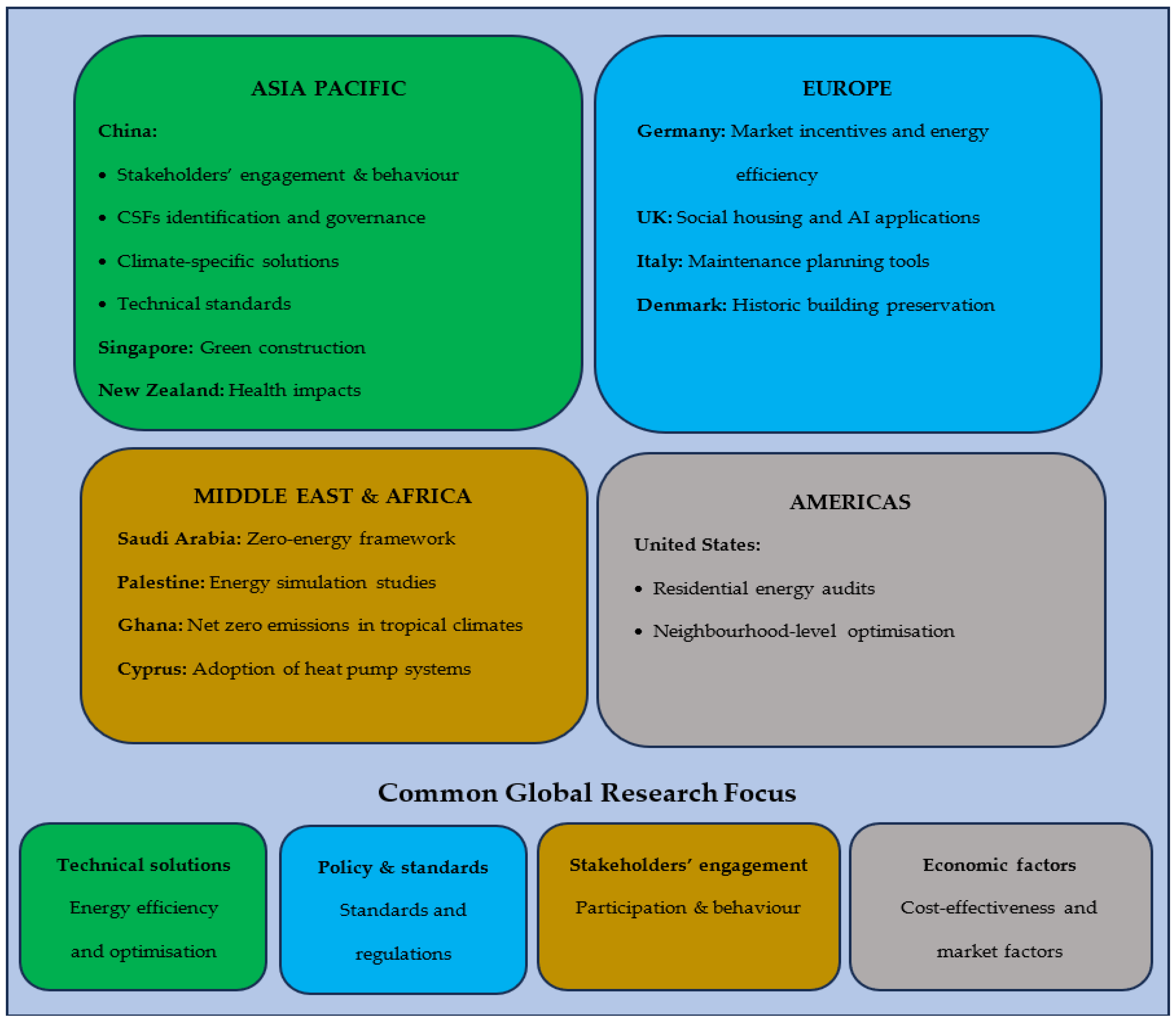

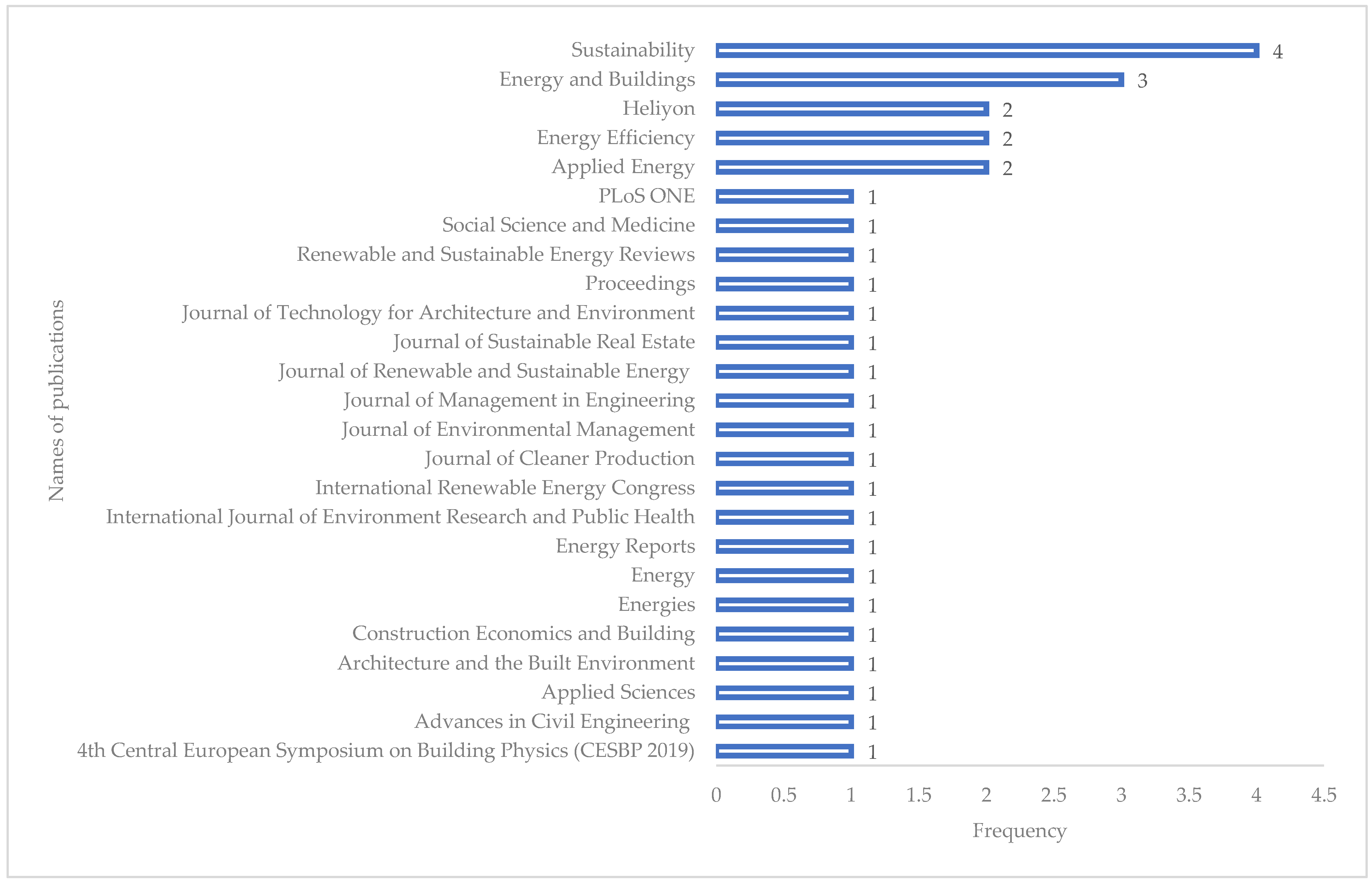
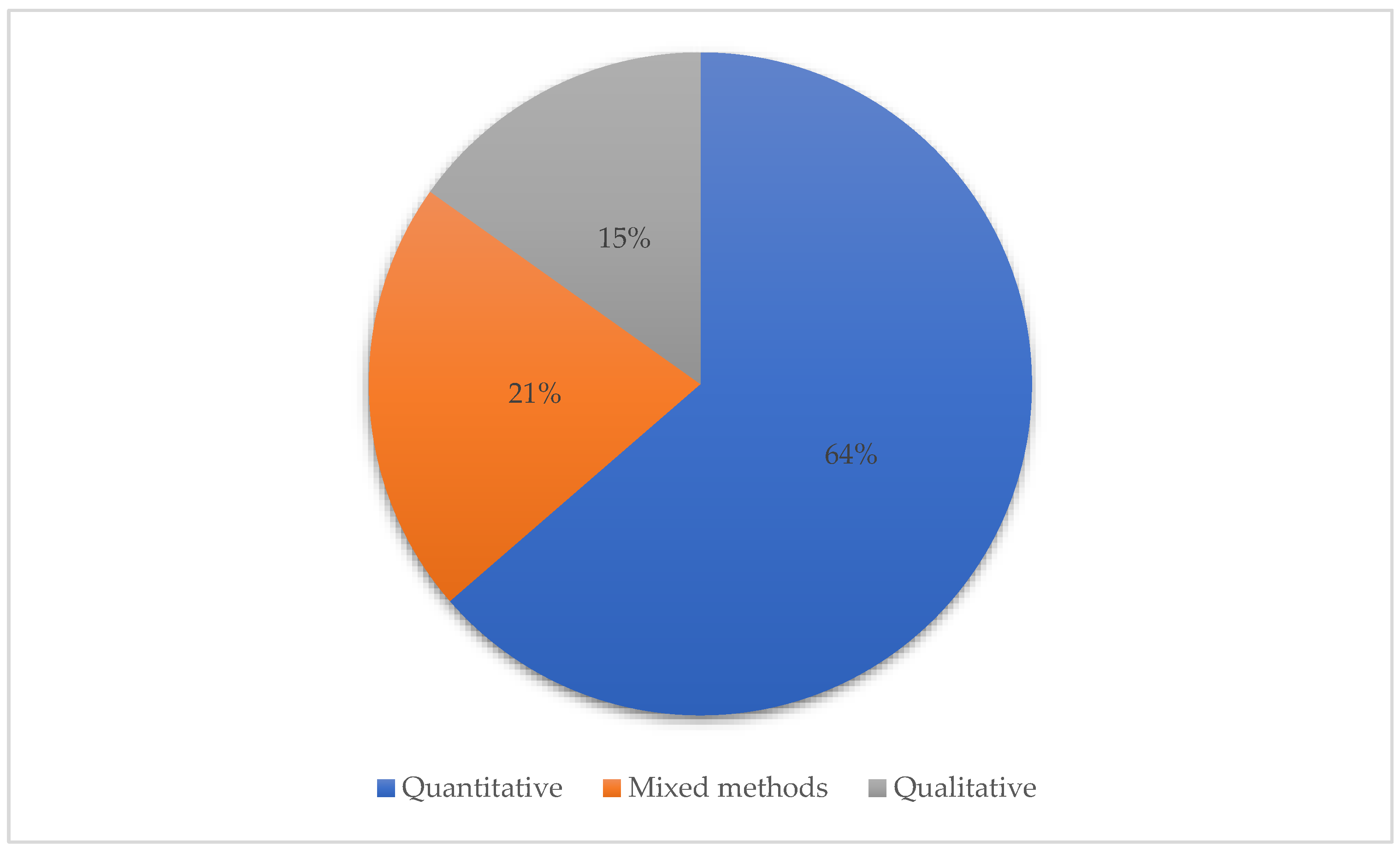
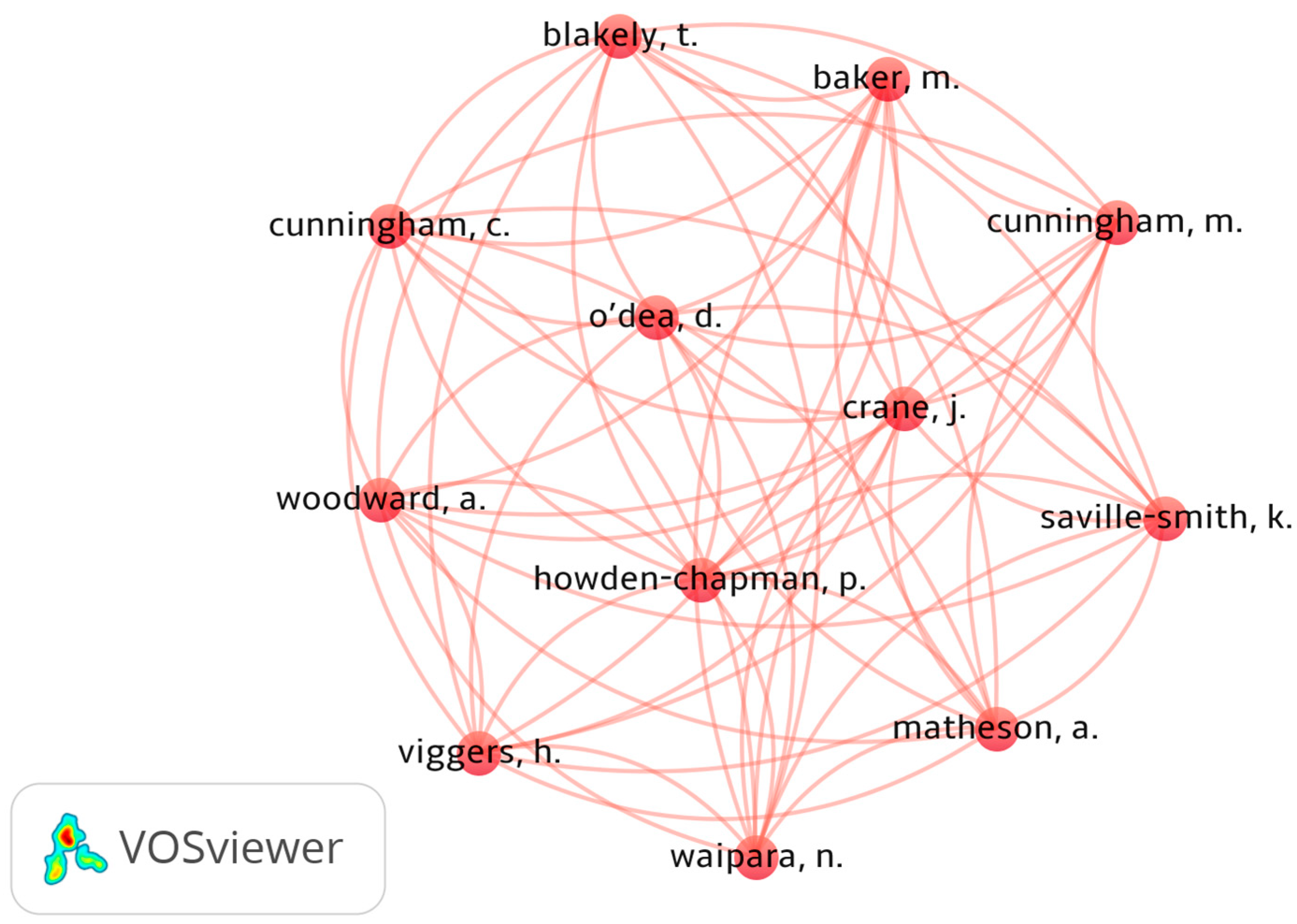

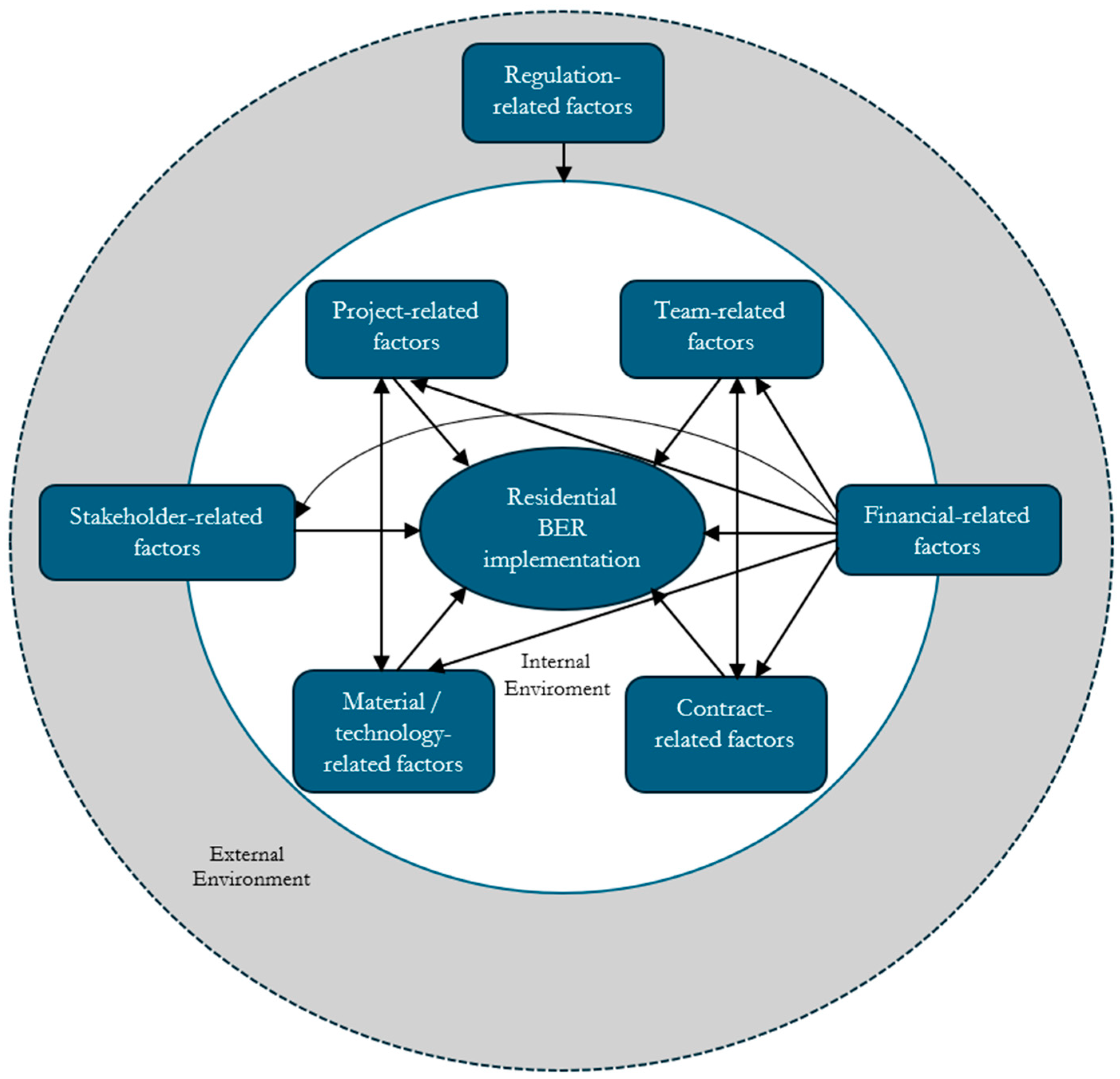
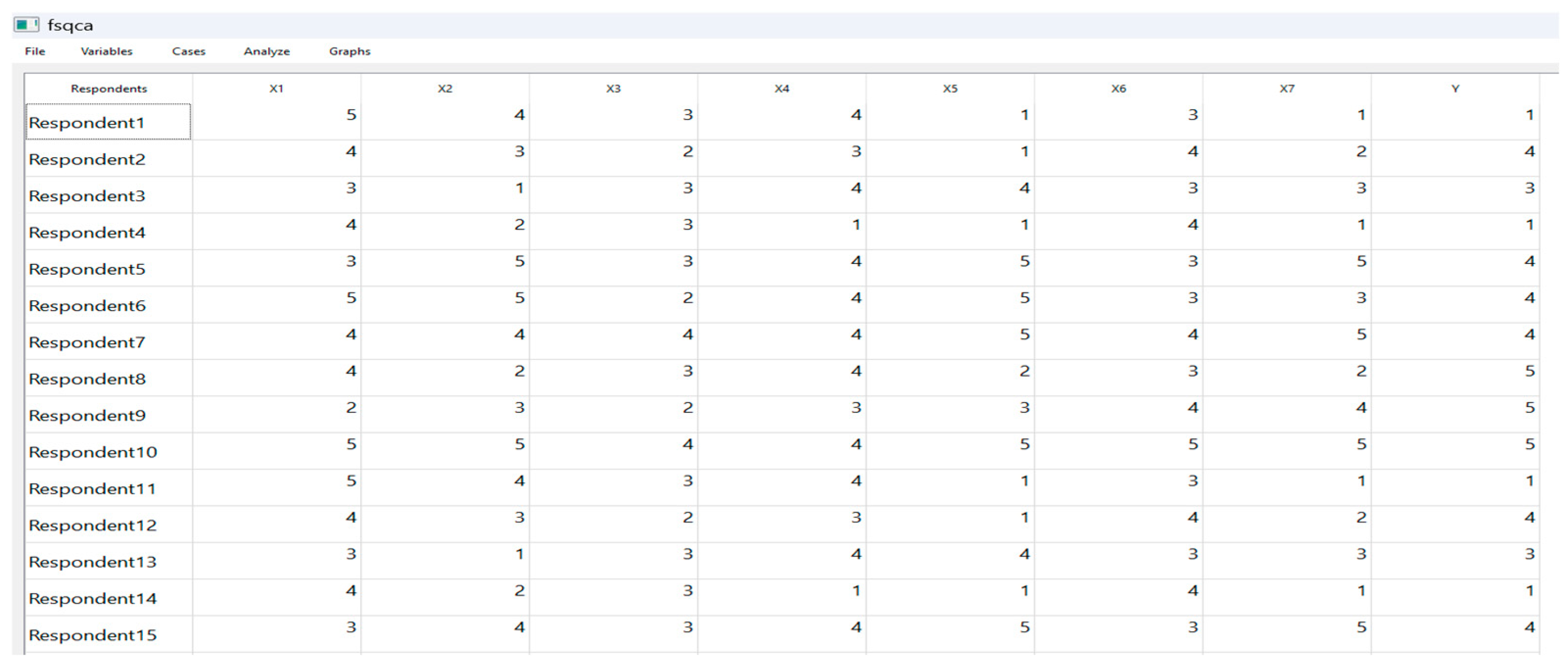
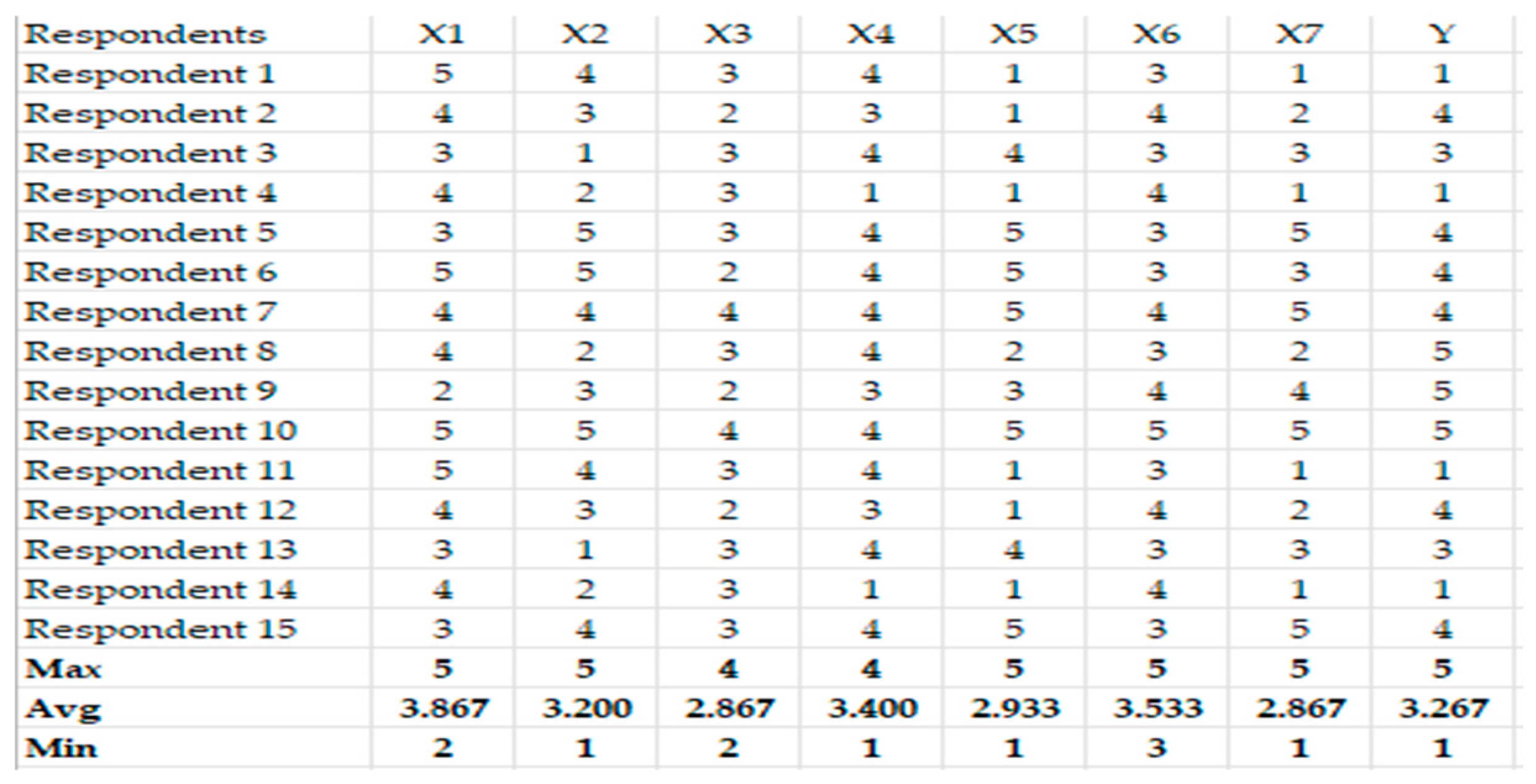
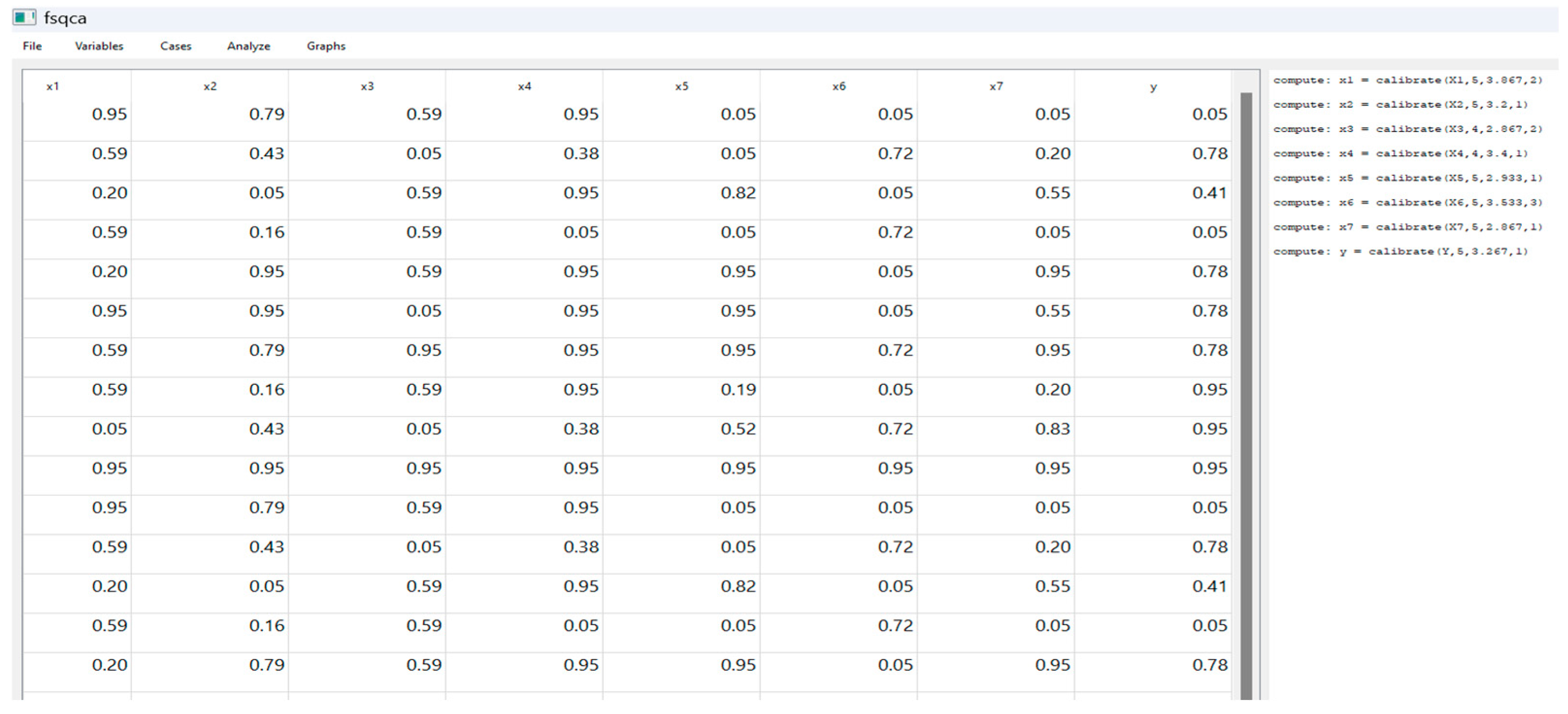
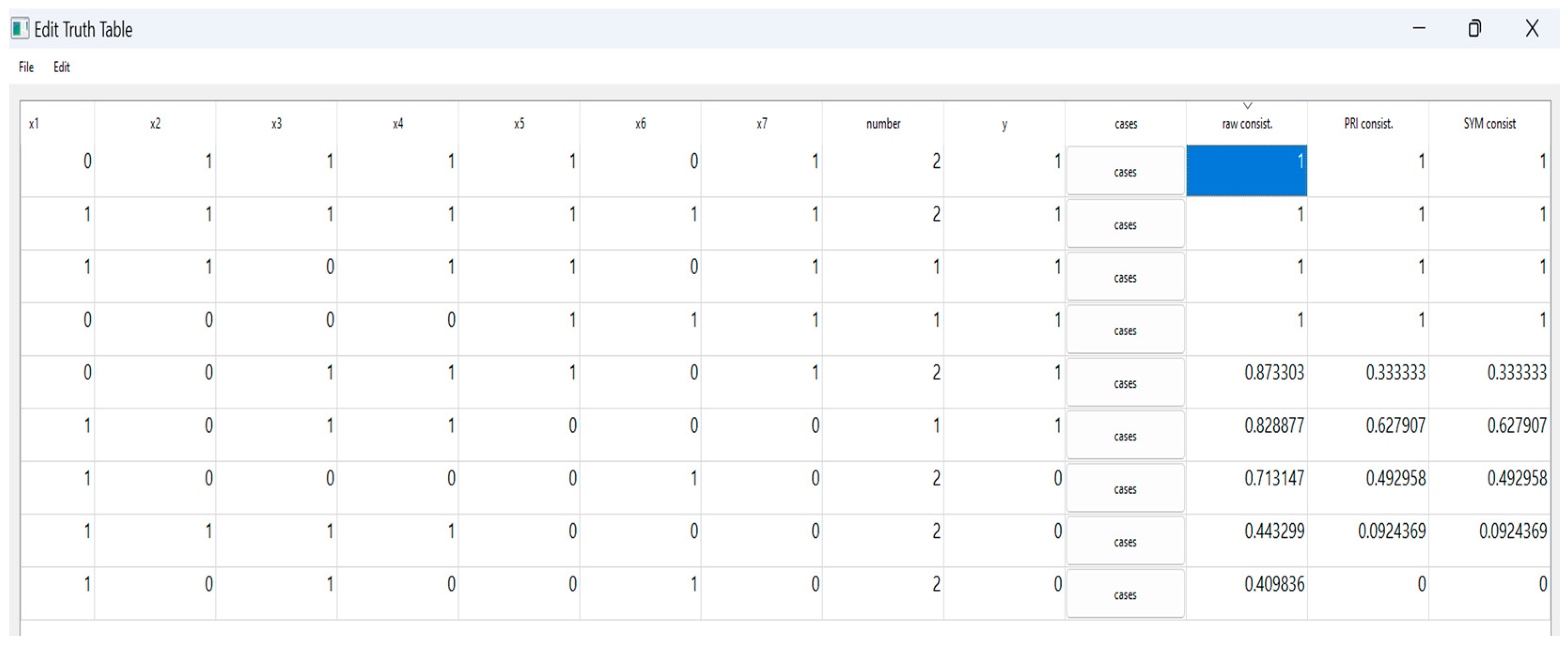
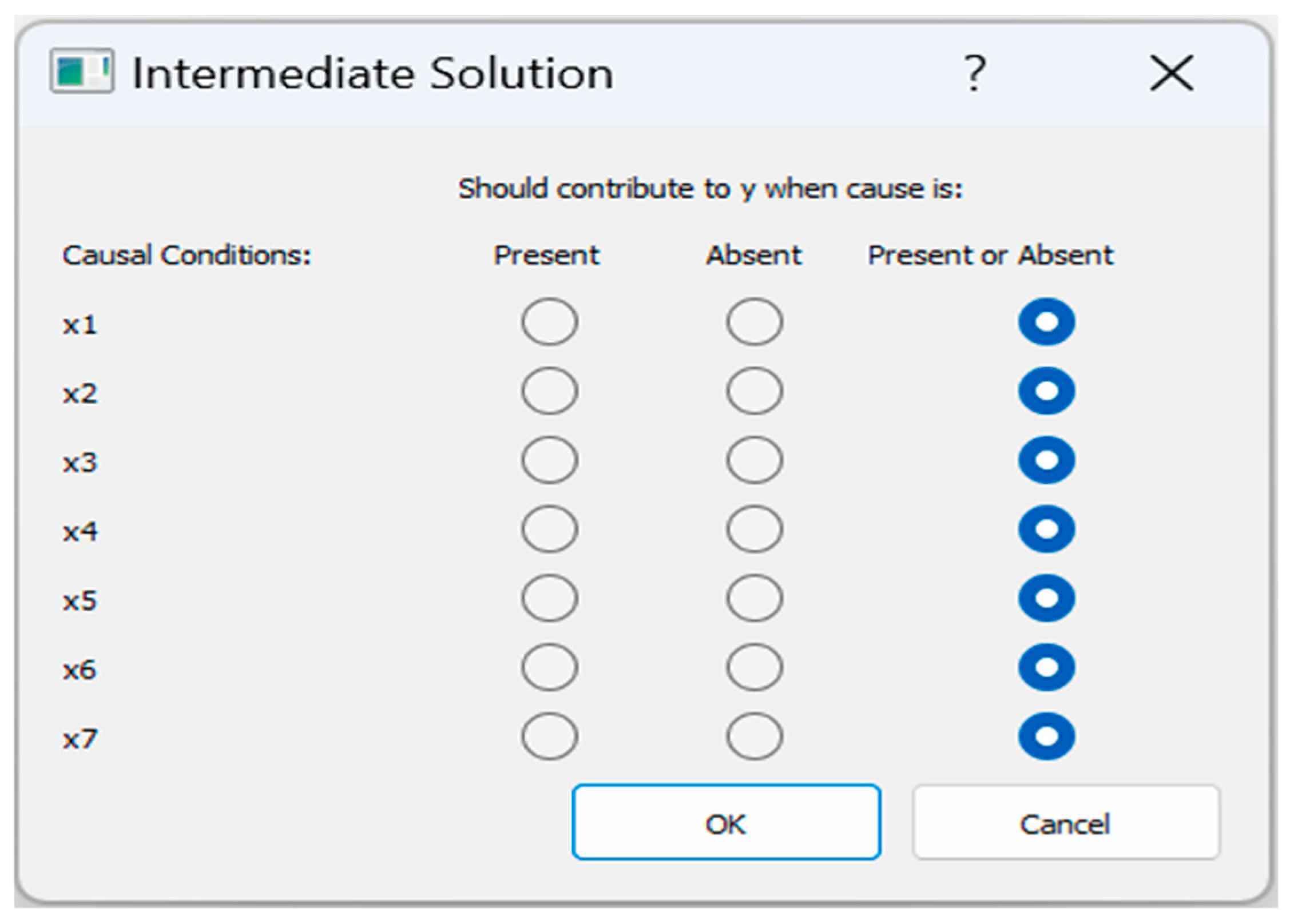
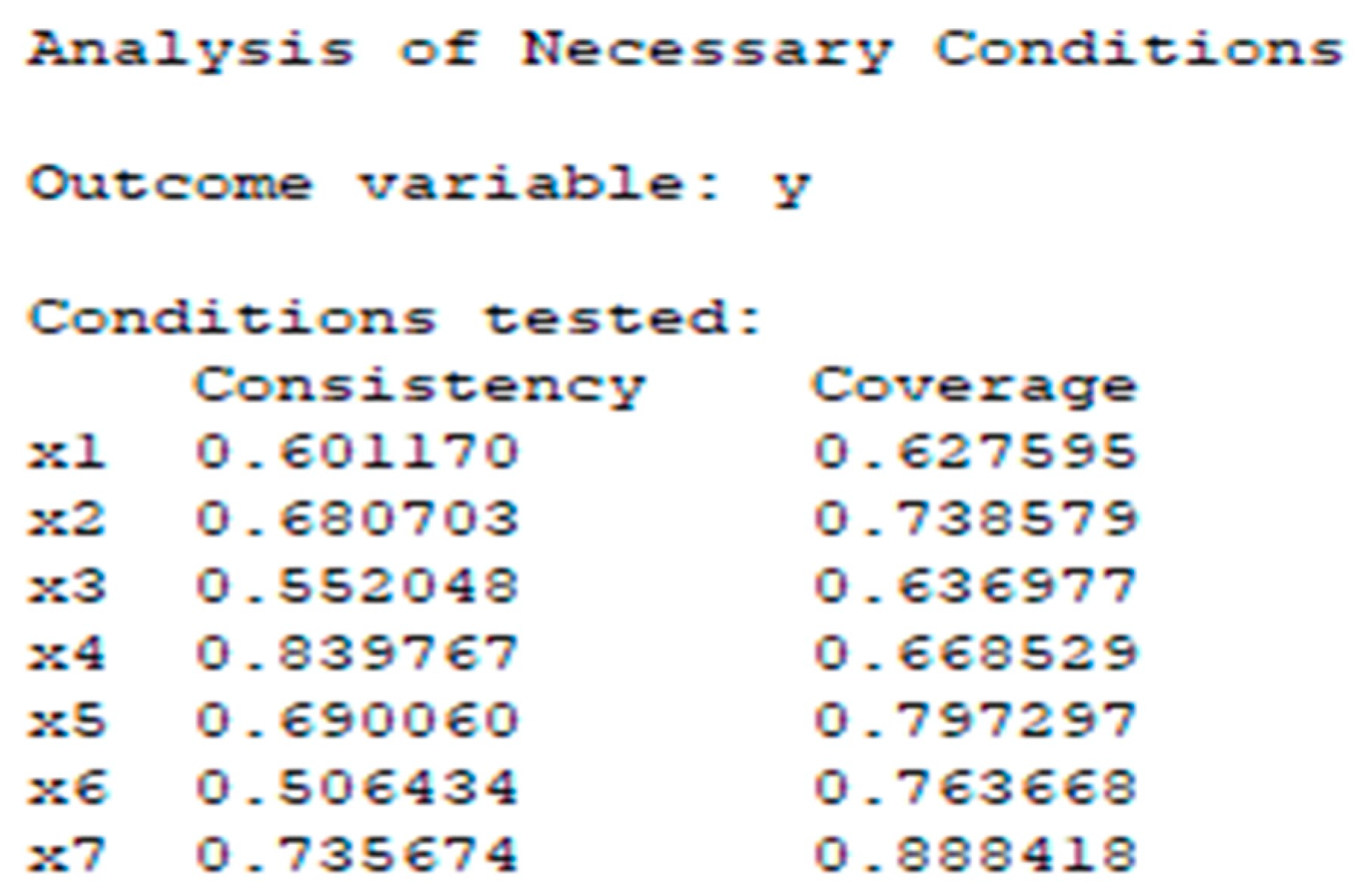
| Database | Keywords and Search Strings |
|---|---|
| Scopus (32) | (ALL(“energy retrofitting” OR “energy-efficient retrofitting” OR “energy retrofit” OR “deep energy retrofit” OR “sustainable building retrofit”) AND TITLE-ABS-KEY (“residential buildings” OR “housing” OR “dwellings” OR “residence”) AND TITLE-ABS-KEY (“critical success factors” OR “csf*” OR “success factors” OR “key factors” OR “enablers”)) AND (LIMIT-TO (LANGUAGE, “English”)) |
| Web of Science (11) | ALL = (building retrofit*) AND ALL = (“residential buildings” or “dwellings”) AND ALL = (“key factor” or “success factors” or “critical success factors” or enablers) AND ALL = (energy retrofit*) |
| Google Scholar (67) | “Critical success factors” and “residential buildings” or “homes” or “housing” and “energy retrofit*” |
| Additional literature found via Google search (28) | What are the CSFs for building energy retrofit implementation? |
| Inclusion | Exclusion |
|---|---|
| Studies focused on residential BER. | Studies not focused on residential buildings. |
| Studies that analysed CSF (quantitatively or qualitatively, or mixed methods). | Research focused solely on different aspects of BER (e.g., energy conservation, energy efficiency, cost analysis) without a clear emphasis on CSFs. |
| Studies conducted in different climates, but focused on residential buildings. | Viewpoints and editorials that lack empirical data or systematic analysis related to CSFs. |
| Studies whose full texts were available online to ensure comprehensive data extraction. | |
| Studies written in the English Language. |
| S/N | Publication | Publication Type | Research Purpose | Region/Country of Origin | Research Method | Results |
|---|---|---|---|---|---|---|
| 1 | Armijo et al. [21] | Conference paper | To describe the use of the OpenBIM approach in transforming stakeholders’ implicit knowledge for automation into an OpenBIM digital process that adheres to Building Information Modelling (BIM) standards. | Europe | Qualitative (clustered, randomised community-based trial) | Insulating homes reduces health disparities in communities with low incomes by improving indoor temperatures and health outcomes. |
| 2 | Galvin [22] | Journal article | To investigate if rental and sales markets discourage property owners from upgrading their apartments to meet strict energy efficiency requirements. | Western Germany | Quantitative (evolutionary game theory) | Apartment owners who convert their properties frequently discover that, unless they receive a subsidy, sales premiums for energy efficiency do not cover retrofit expenses, and purchasers must pay higher purchase prices that are not entirely offset by energy savings. Landlords recoup only a fraction of retrofit costs through rental premiums, but tenants may balance higher rents with lower energy bills. |
| 3 | Gaspari et al. [15] | Journal article | To provide Social Housing Companies with a useful and time-saving tool to help them plan maintenance and retrofit projects for the diverse and large number of buildings they manage. | Italy | Mixed methods | Inaccuracies in energy performance estimates generated using the fast approach are acceptable since social housing managers save a significant amount of money, time, and effort during the planning stage. Simulations shows the potential improvements that could be achieved by applying different scenarios to the entire stock. |
| 4 | Groh et al. [23] | Journal article | To determine whether energy efficiency commands a higher price in the German rental market. | Germany | Quantitative | Current regulations, including the CO2 tax, do not sufficiently compensate landlords for retrofit costs. The marginal costs outweigh the marginal benefits by far. |
| 5 | He et al. [27] | Journal article | To investigate the factors affecting residents’ intentions to green retrofit existing residential buildings. | China | Quantitative | Subjective norms and perceived behavioural control are two factors that directly and significantly affect residents’ intentions. Though it does not directly impact intentions, the concept of green retrofitting indirectly affects them through behaviour and subjective norms. The biggest influence comes from policy issues, both directly and indirectly through perceived behavioural control. Demographic characteristics and regional differences show significant variations in influence paths. |
| 6 | He et al. [66] | Journal article | To develop a cost-effective decision-making model for building retrofits suited to the varied and temperate climate regions of China. | China | Mixed methods | In temperate zones, key measures include lighting upgrades, wall insulation, and better window glazing. In hot summer–cold winter zones, additional upgrades like heating systems and shading devices are crucial. A total of 40% energy saving can significantly reduce energy use by approximately USD 1.30 to 3.20 per m2/year. |
| 7 | Howden-Chapman et al. [67] | Journal article | To describe the purposes and procedures of a clustered, randomised, single-blinded study on the health effects of insulating existing homes. | New Zealand | Quantitative (clustered, randomised community-based trial) | Complex environmental interventions may be robustly tested in large-scale trials with high participation rates. |
| 8 | Huang and Lin [24] | Journal article | To evaluate the rights and interests of stakeholders as well as the influencing factors. | China | Quantitative (evolutionary game theory) | The study highlights the best strategies for stakeholders, emphasising the role of government subsidies and fines in encouraging collaboration and involvement in energy-saving retrofitting. |
| 9 | Huang et al. [25] | Journal article | To examine the factors influencing the willingness of homeowners to invest in building retrofitting. | China | Mixed methods (interviews and survey) | Financial incentives, environmental knowledge, and perceived advantages were all significant factors in determining investors’ willingness. |
| 10 | Hwang et al. [68] | Journal article | To evaluate the probability, impact, and criticality of green building construction projects to determine the primary factors influencing their productivity and compare them to conventional projects. | Singapore | Mixed methods (literature review, interviews, and survey) | Workers’ experience, technological design modifications, workers’ skill level. Green building initiatives are more productive than regular projects due to better planning and work scheduling. |
| 11 | Jagarajan et al. [40] | Journal article | To examine the body of research on green retrofitting, pinpoint current research directions, and emphasise the barriers and CSFs necessary for green retrofit projects to be implemented successfully. | Not specified | Qualitative (systematic literature review) | Stakeholders’ engagement, technological advances, and policy support are critical to successful green retrofit implementation. |
| 12 | Jia [37] | Thesis | To determine and reduce the hazards associated with household energy retrofits in China’s hot summer and cold winter regions. | China | Quantitative (Transaction Costs Theory) | The study identifies financial, organisational, and technological risks and proposed risk reduction methods, emphasising the need for government assistance and effective project management. |
| 13 | Krarti et al. [29] | Journal article | To assess the environmental and economic impacts of energy-saving initiatives for existing and new buildings. | Saudi Arabia | Quantitative (bottom-up analysis) | The study emphasises the relevance of government regulations and incentives for encouraging private-sector investment in energy-saving measures. |
| 14 | Liang et al. [17] | Journal article | To develop a set of CSFs for energy efficiency retrofit projects and examine how stakeholders and CSFs interact. | China | Qualitative (SNA and stakeholder analysis) | The five significant CSFs for managing green retrofit projects are stakeholder cooperation, policy support, cost, technology, and information sharing. |
| 15 | Liu et al. [26] | Journal article | To assess the influence of public participation on residential buildings’ energy-saving retrofits. | China | Mixed methods | Public participation before, during, and after retrofitting results in greater energy savings. |
| 16 | Madushika and Lu [41] | Journal article | To review the current state of green retrofitting in developing economies and suggest future research directions to enhance its application. | Developing economies (with a focus on countries like China, Malaysia, and Egypt) | Mixed methods (scientometric and content analyses) | The study suggests five key topics for future research in developing countries: performance evaluation, performance optimisation, adoption, regulations and incentives, and stakeholder involvement. |
| 17 | Martin et al. [33] | Journal article | To optimise and schedule residential building retrofits as efficiently as possible to achieve several policy objectives. | Not specified | Quantitative (SHAPE model) | The study emphasises the significance of strategic planning as a decision-support tool for stakeholders in informed decision making on retrofit measures. |
| 18 | Mejjaouli [34] | Journal article | To provide a comprehensive framework for building retrofits that will result in zero-energy buildings. | Saudi Arabia | Quantitative (mathematical programming, simulation, and the Analytic Hierarchy Process) | The framework’s application results in a retrofitting plan that achieves 30% annual energy savings and has a 2.2-year payback period. |
| 19 | Monna et al. [31] | Journal article | To analyse energy simulation to evaluate the possible energy savings from a proposed retrofitting programme for typical existing residential buildings. | Palestine | Quantitative | The results suggest significant energy savings from the retrofitting measures. Level one measures resulted in a 19-24% decrease in energy consumption. Combining levels one and two led to a 50–57% reduction, while implementing all three levels achieved a 71–80% decrease in total energy usage for heating, cooling, lighting, water heating, and air conditioning. |
| 20 | Mukhtar et al. [30] | Journal article | To evaluate the economic, environmental, and technical benefits of installing heat pump systems in existing housing stock to increase energy efficiency and conservation. | Cyprus | Quantitative | The retrofit project resulted in considerable energy savings, lowering electrical energy consumption for heating/cooling systems by 144,825 kWh annually and CO2 emissions by 121,592.8 kg annually. The economic study determined that the retrofit was feasible. |
| 21 | Ohene et al. [35] | Journal article | To investigate the feasibility of constructing net-zero energy buildings in tropical regions. | Ghana | Quantitative (parametric simulation) | Passive design strategies, such as natural ventilation, sun-shading, daylighting, and envelope airtightness, can significantly reduce building energy use intensity by 48–50%. |
| 22 | Pardo-Bosch et al. [32] | Journal article | To investigate significant aspects of building retrofitting for strategic sustainable development of cities. | European cities (Nantes, Hamburg, and Helsinki) | Qualitative | The integration of customer interface, funding and public–private–people partnership approach is key to scale up. |
| 23 | Peel et al. [14] | Journal article | To investigate the enablers and barriers to energy efficiency retrofitting of social housing. | UK | Mixed methods (interviews and surveys) | The study identifies seven categories of barriers and enablers: financial matters, technical issues, information technology, government policy and regulation, social factors (including awareness of the energy efficiency agenda), quality of workmanship, and disruption to residents. |
| 24 | Sang and Yao [18] | Journal article | To assess and identify the impact of CSFs on the development of green housing projects. | China | Quantitative | The study identifies five categories of CSFs: management factors, technical capacity factors, financial constraint factors, resource factors, and policy and regulatory factors. |
| 25 | Shen et al. [20] | Journal article | To identify CSFs and develop a collaborative governance mechanism for transforming existing residential buildings in urban renewal schemes. | China | Quantitative (SNA) | The study emphasises the importance of collaborative governance, proposing nine governance mechanisms based on the relationships between 13 CSFs and their respective stakeholders. |
| 26 | Soulios et al. [69] | Conference paper | To evaluate the interior insulation systems’ hygrothermal performance in upgrading a historic building. | Denmark | Quantitative (hygrothermal simulations) | Adding internal insulation increased the moisture content in the original masonry walls, which implies a higher risk of moisture-related damage such as mould growth, frost damage, and interstitial condensation. |
| 27 | Su et al. [42] | Journal article | To review the state-of-the-art in building energy research and determine directions for future developments. | Not specified | Qualitative (literature review) | Most studies focused on energy analysis and conservation, including energy models for prediction, the impact of resident behaviour, building forms, and renewable energy utilisation. |
| 28 | Wang et al. [19] | Journal article | To develop the best possible energy-saving retrofit plans for older homes. | China | Quantitative | The optimal retrofit scheme can reduce energy consumption by 18.52% in the targeted residential buildings, resulting in total energy savings of approximately 260.43 GWh. |
| 29 | Wenninger et al. [38] | Journal article | To investigate the use of socio-demographic data and explainable artificial intelligence (XAI) for understanding and improving residential BER practices. | UK | Quantitative | The critical factors influencing retrofitting decisions are building age, energy performance ratings, and the socio-economic status of residents. |
| 30 | Wierzba et al. [39] | Journal article | To develop a proactive approach that encourages the use of audit data throughout neighbourhoods to maximise the impact of residential building energy audits. | US | Quantitative | Investing USD 146,500 in retrofits could save 9.1 million kBtu of energy annually, reduce utility costs by USD 64,000, and cut 555 US tons of greenhouse gas emissions. Targeting older neighbourhoods benefits low-income families and strengthens community ties. This cost-effective approach supports policy initiatives for neighbourhood renewal and energy management. |
| 31 | Wu et al. [36] | Journal article | To assess the feasibility of retrofitting existing residential buildings in Guilin, China, to satisfy the EnerPHit standard—a certification for energy-efficient building retrofits. | China | Quantitative | Retrofitting residential buildings in Guilin, China, to the EnerPHit standard can reduce energy consumption by up to 60%. Despite high initial costs, the long-term savings and environmental benefits make it worthwhile. |
| 32 | Xie and Liu [70] | Journal article | To analyse stakeholders’ decision-making behaviour in energy-efficient retrofitting of office buildings. | China | Quantitative (tripartite evolutionary game model) | Stakeholders’ decisions in energy-efficient retrofitting of office buildings are heavily influenced by mutual benefits and costs. Government policies are effective when retrofit projects are profitable and public willingness is high. |
| 33 | Yang et al. [28] | Journal article | To analyse stakeholders’ behaviours in green retrofitting of traditional residential buildings. | China | Quantitative (tripartite evolutionary game model) | Government regulations and subsidies significantly boost participation. However, without direct incentives, effective publicity, education, and technological advancements can achieve similar results. The willingness of enterprises to invest depends on residents’ perceived benefits and risks. |
| Clusters | Connected Keywords |
|---|---|
| 1 | Energy performance certificate, economic viability |
| 2 | Energy conservation, energy efficiency |
| 3 | Green retrofitting, review |
| 4 | Retrofitting, social housing |
| 5 | Building retrofitting, thermal comfort |
| Factor | CSFs Identified | Sources |
|---|---|---|
| Project-Related Factors | Conducting comprehensive energy audits. | [31,39] |
| Effective planning and management. | [18,34] | |
| Extensive pre-project planning and detailed scheduling. | [35,68] | |
| Site and building characteristics. | [39,40] | |
| Tailored design considerations. | [30] | |
| Contract-Related Factors | Clear contractual agreements. | [14,40,41] |
| Stakeholder-Related Factors | Stakeholders’ active participation and collaboration. | [20,70] |
| Building owners’ commitment to energy efficiency. | [32] | |
| Effective community involvement in BER projects. | [34,67] | |
| Public participation at different stages (before, during, and after retrofitting). | [26] | |
| Effective communication amongst stakeholders. | [17,41,42] | |
| Awareness-raising and educational initiatives for stakeholders. | [25,27,28] | |
| Team-Related Factors | Expertise and technical knowledge within a multidisciplinary project team. | [40] |
| Collaborative governance and team dynamics. | [41] | |
| Continuous training and improvement in knowledge, skills, and human resources. | [20,40] | |
| Financial-Related Factors | Financial incentives. | [24,28,40] |
| Cost–benefit analysis. | [40] | |
| Financial viability through rent increase potential and reduced operational and maintenance costs. | [23,34,66] | |
| Profit-sharing considerations amongst stakeholders. | [22] | |
| Regulation-Related Factors | Supportive government policies and incentives. | [6,29,37] |
| Regulatory frameworks that set minimum energy performance standards for BER. | [22,33,41] | |
| Alignment of project goals with regulatory objectives. | [20,36] | |
| Material/Technology-Related Factors | Use of sustainable materials such as improved insulation and renewable energy technologies. | [19,69] |
| Implementation of BIM for efficient project coordination and cost control. | [21] | |
| Utilisation of AI for effective technology selection and assessment of BER practices. | [38] | |
| Training and support for contractors and homeowners. | [15] |
| Configurations | X1 | X2 | X3 | X4 | X5 | X6 | X7 | Raw Coverage | Unique Coverage | Consistency |
|---|---|---|---|---|---|---|---|---|---|---|
| ~x1 * x3 * x4 * x5 * ~ x6 * x7 |  |  |  |  |  |  | 0.341521 | 0.14503 | 0.9125 | |
| x1 * ~ x2 * x3 * x4 * ~ x5 * ~ x6 * ~ x7 |  |  |  |  |  |  |  | 0.181287 | 0.0467837 | 0.828877 |
| ~x1 * ~ x2 * ~ x3 * ~ x4 * x5 * x6 * x7 |  |  |  |  |  |  |  | 0.14269 | 0.0549709 | 1 |
| x1 * x2 * ~ x3 * x4 * x5 * ~ x6 * x7 |  |  |  |  |  |  |  | 0.194152 | 0.0584797 | 1 |
| x1 * x2 * x3 * x4 * x5 * x6 * x7 |  |  |  |  |  |  |  | 0.256141 | 0.141521 | 1 |
Disclaimer/Publisher’s Note: The statements, opinions and data contained in all publications are solely those of the individual author(s) and contributor(s) and not of MDPI and/or the editor(s). MDPI and/or the editor(s) disclaim responsibility for any injury to people or property resulting from any ideas, methods, instructions or products referred to in the content. |
© 2024 by the authors. Licensee MDPI, Basel, Switzerland. This article is an open access article distributed under the terms and conditions of the Creative Commons Attribution (CC BY) license (https://creativecommons.org/licenses/by/4.0/).
Share and Cite
Adegoke, A.S.; Abidoye, R.B.; Sunindijo, R.Y. A Bibliometric Analysis and Scoping Review of the Critical Success Factors for Residential Building Energy Retrofitting. Buildings 2024, 14, 3989. https://doi.org/10.3390/buildings14123989
Adegoke AS, Abidoye RB, Sunindijo RY. A Bibliometric Analysis and Scoping Review of the Critical Success Factors for Residential Building Energy Retrofitting. Buildings. 2024; 14(12):3989. https://doi.org/10.3390/buildings14123989
Chicago/Turabian StyleAdegoke, Ayodele Samuel, Rotimi Boluwatife Abidoye, and Riza Yosia Sunindijo. 2024. "A Bibliometric Analysis and Scoping Review of the Critical Success Factors for Residential Building Energy Retrofitting" Buildings 14, no. 12: 3989. https://doi.org/10.3390/buildings14123989
APA StyleAdegoke, A. S., Abidoye, R. B., & Sunindijo, R. Y. (2024). A Bibliometric Analysis and Scoping Review of the Critical Success Factors for Residential Building Energy Retrofitting. Buildings, 14(12), 3989. https://doi.org/10.3390/buildings14123989








